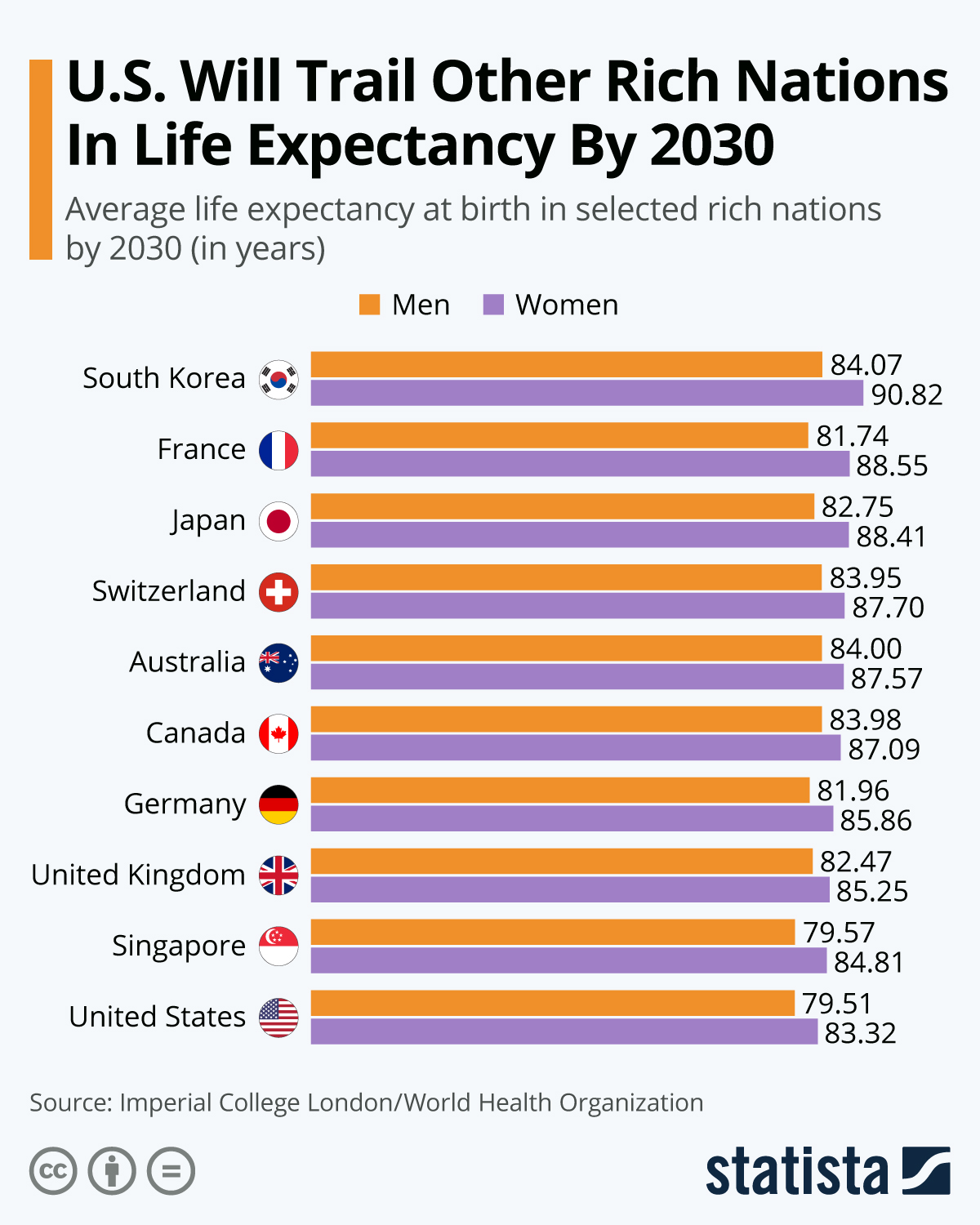While other nations are set to break records, America lags behind in life expectancy projections.
Life expectancy is expected to increase in numerous developed and emerging economies according to a study by the Imperial College London and the World Health Organization (WHO) published 2017.
The research, funded by the UK Medical Research Council and the U.S. Environmental Protection Agency, studied the population data from 35 developed and emerging economies.
The forecast revealed that all 35 economies are expected to experience increases in their average life expectancies with a probability of 65% among women and 85% among men.
Some of the economies included in the study are Australia, Belgium, Chile, Czech Republic, France, Germany, South Korea, Singapore, Switzerland, the United States, and the United Kingdom.
Highlights
Statista created a chart displaying the projections among selected high-income economies aggregated based on sex.
South Korean women recorded the highest projection in the study. There is a 90% probability that their life expectancy will exceed 86.7 years and a 57% probability that they will even breach the 90-year barrier.
A commonly held belief is that 90 years would be the upper limit of life expectancy. The researchers believe otherwise, saying that humanity is nowhere near the upper bound supposing that it even exists.
The high life expectancy in South Korea may be explained by factors like good nutrition during childhood years, lower tendency to smoke, and healthcare access.
In comparison, the United States lags behind its fellow developed economies. American men and women expected to reach only about 80 and 83, respectively. This makes it the country with the lowest life expectancy among the developed economies included in the study.
Some factors contributing to the low projections for the United States mentioned by the researchers include the high rates of obesity, homicide, child and maternal mortality as well as the lack of universal healthcare.
Rethinking the future
According to Professor Majid Ezzati, lead researcher from the School of Public Health at Imperial College London, these results suggest the need to strengthen the social and health care systems to support the ageing population who tend to have increasing needs.
“This is the opposite of what is being done in the era of austerity,” Ezzati pointed out.
Apart from boosting the capabilities of global health systems, Ezzati also recommended the revisiting of pension systems — assessing whether or not they can adequately support the elderly and if there is a need to consider working into later life.
Methodology
In order to create the life expectancy projections, the researchers employed a method known as Bayesian model averaging (BMA).
Traditionally, the use of a single model is preferred in generating life expectancy projections. In BMA, an ensemble of models is used — the output of each model will contribute towards the final projections. This is an approach prominently used in weather forecasts and the social sciences.
In this research, a total of 21 forecasting models were used to compute for the projections.
If you are interested in knowing more about the details of the methodology employed in the study along with other insights you might find interesting, you can read the full article published in The Lancet.
Reference
Kontis, V., Bennett, J. E., Mathers, C. D., Li, G., Foreman, K., & Ezzati, M. (2017). Future life expectancy in 35 industrialised countries: Projections with a Bayesian model ensemble. The Lancet, 389(10076), 1323-1335. doi:10.1016/s0140-6736(16)32381-9











